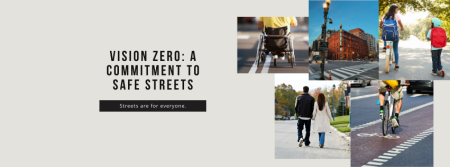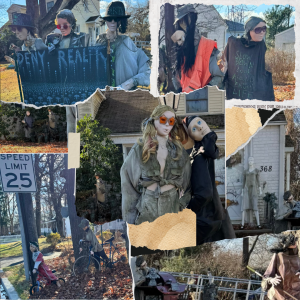
You’ve probably heard a lot about Vision Zero and you’re wondering what is it? Municipalities across New Jersey and the United States are committing to Vision Zero through resolutions, ordinances aimed at increasing road safety, and street redesigns that accommodate all people, regardless of how they get around.
What is Vision Zero? A Bold Strategy for Road Safety
In the world of transportation and road safety, Vision Zero has emerged as a groundbreaking approach aimed at eliminating traffic-related fatalities and serious injuries. While the idea might seem idealistic at first, it’s grounded in the belief that no loss of life or serious injury on the roads is acceptable. By shifting the focus to proactive safety measures, Vision Zero aims to create a road system that protects all users, including drivers, pedestrians, cyclists, and motorcyclists.
Origins of Vision Zero
Vision Zero was first introduced in Sweden in 1997. The country, known for its strong commitment to social welfare and public safety, set out with the goal of creating a transportation system where nobody would be killed or seriously injured in road accidents. Since its inception, Sweden has seen significant success, with traffic fatalities dropping by over half in the years that followed the implementation of Vision Zero.
Seeing these positive results, the idea began to spread globally. Today, cities and countries around the world have adopted Vision Zero as part of their road safety strategies, including major urban centers in the U.S., Canada, Europe, and beyond. But Vision Zero isn’t just a set of guidelines—it’s a call to action and a comprehensive approach to how we think about traffic safety.
Key Principles of Vision Zero
- Human-Centered Design: One of the core tenets of Vision Zero is the recognition that humans make mistakes. Road design should accommodate human error, making it difficult for accidents to result in serious injuries or deaths. For example, roundabouts or protected bike lanes can reduce the likelihood of fatal collisions.
- Systemic Safety: Vision Zero doesn’t just focus on individual behavior but emphasizes improving the entire transportation system. This includes engineering safer roadways, introducing more robust vehicle safety standards, and enhancing traffic laws. The goal is to redesign roads and infrastructure to prevent severe accidents from occurring, regardless of human error.
- Shared Responsibility: Unlike traditional road safety approaches, which often place the blame for accidents on drivers, Vision Zero emphasizes that responsibility is shared by everyone involved—drivers, cyclists, pedestrians, policymakers, and engineers. It’s not about blaming individuals but creating a safer system for all.
- Data-Driven Solutions: Effective policies and infrastructure changes must be informed by solid data. Vision Zero calls for detailed data collection on traffic accidents, injury patterns, and the behavior of road users to determine where improvements are needed. This allows for targeted solutions and better resource allocation.
Vision Zero in Practice
While Vision Zero might sound like an ambitious ideal, there are numerous real-world examples showing its effectiveness. Cities around the world have already begun to implement Vision Zero strategies with significant success.
- Hoboken, NJ: Since committing to Vision Zero in 2018, Hoboken has not seen a traffic fatality in seven years, thanks to safety improvements that include daylighting intersections – the process of increasing visibility at crosswalks, incorporating bike lanes, and reducing speed limits throughout the city.
- Jersey City, NJ: Jersey City became the first city in New Jersey to commit to Vision Zero through initiatives like pop-up pedestrian plazas, installing roundabouts, reducing speed limits, and daylighting intersections.
- New York City: In 2014, NYC adopted Vision Zero as part of its official traffic safety strategy. The city implemented measures like lower speed limits, the expansion of bike lanes, and increased enforcement of traffic laws.
As more cities adopt Vision Zero principles, it’s becoming clear that road safety is not just about enforcement but about rethinking the very nature of how we design and interact with our road systems. The initiative has the potential to transform cities into safer, more inclusive environments where everyone—from children to the elderly—can move around confidently without the constant threat of road crashes.
Vision Zero is A Shared Goal
Achieving zero traffic deaths and serious injuries requires continued collaboration among government agencies, engineers, public health professionals, and the public. Everyone must play a role in ensuring that Vision Zero is more than just a lofty goal but a tangible, life-saving reality.
Vision Zero is more than just a traffic safety program; it is a philosophy that redefines how we view road safety. It challenges the notion that traffic deaths are inevitable and calls for systemic changes to create a safer world for all road users. The journey toward zero is long, but it’s a step toward a future where no one has to fear for their life on the road.
Learn more about Vision Zero, download a sample resolution, and take the Vision Zero Pledge HERE.










